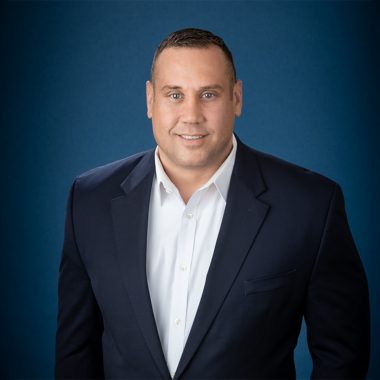Building an effective executive presence online has become critical for career advancement, but most senior leaders don’t know where to start. The competition has shifted from local to global, and traditional networking approaches aren’t enough anymore. Vice President at iCareerSolutions, Tamara Cameron, who helps executives navigate this digital transformation, brings a unique perspective from her background in library science and career management to solve this modern challenge.
How to Build a Digital-First Executive Brand
The pandemic transformed how executives search for jobs. What was once a competition among a few hundred local candidates has become a global contest, with thousands of qualified professionals applying for the same roles. Tamara experienced this shift firsthand while working at a career management company, where she played a key role in taking job training programs online. “I was actually quite instrumental in taking the training program digital. I was the first across Canada to deliver these programs virtually,” she explains.
The experience opened her eyes. On one hand, digital systems expanded access and helped more people find opportunities. On the other, they introduced new challenges, more competition, automated filters, and less human connection. Tamara saw both the promise and the pitfalls of a job market reshaped by technology.
Stop Trying to Be Everything to Everyone
The biggest mistake executives make is refusing to specialize. Tamara sees this constantly with clients who insist they could handle multiple C-suite roles. “I could be a COO, CEO, or CMO,” she mimics. “I don’t want to be dismissive of people, but sometimes I do find it laughable because they’re so wrong.” This approach backfires completely. “It’s not that they can’t do different types of work, but if you try to be everything to everyone, then you become nothing to no one,” she states. “Personal brand means that you’re the best person to do a particular type of job.”
“Just last week, I worked with a CEO who told me, ‘I’m open to CEO, COO, or President roles… really, anything at the C-level.’ That’s not executive positioning, that’s desperation.” Executives often resist this advice because they don’t want to limit their options. They’ll create massive resumes trying to capture every aspect of their career. “They want this in the resume, they want a 10-page biography, they don’t want a resume,” Tamara notes. But this strategy works against them in a market where specialists consistently win. The solution requires focusing on specific business problems. “What is the business problem that you’re going to solve? Generally it’s getting more clients, making more money, reducing operational costs,” she explains. “You have to position yourself as being the person to solve that challenge.”
Match Your Resume to Your LinkedIn
Another common problem is mismatched messaging across platforms. Tamara regularly sees executives whose resumes don’t align with their LinkedIn profiles. “If you’re applying for a CEO position and your LinkedIn says that you’re a CMO, you’re not going to be the best person for that job,” she points out. Recruiters don’t have time for confusion. “A recruiter, the only thing they’re thinking is that I have a software company that’s looking for a CMO who specializes in growth strategies,” she explains. “If they’re reading through your resume and it’s got CEO leadership stuff and it’s not relevant, it’s going to make you a weaker candidate.” These inconsistent messages create red flags. “They show that you’re not exactly committed,” Tamara observes. When competing against highly specialized candidates, any sign of uncertainty becomes a disadvantage.
Build Relationships Before You Need Them
Networking still drives 70 to 80% of executive placements, but the venue has shifted online. Most executives haven’t adapted to this change. “Maybe 10% of executives are actually doing networking online. So there’s a huge untapped potential for people to start building those relationships online,” she notes. The key is timing. “You have to build relationships before you need them. You don’t do it while you need a job,” Tamara emphasizes. This means staying active in industry conversations, speaking at conferences where potential employers might be present, and making connections at target companies. Her approach focuses on sharing insights rather than asking for favors. “Hey, I see you’re struggling with growth strategies as well. So am I. I’m a CMO of a B2B company. Would love to pick your brain for five minutes,” she suggests as an effective opening.
The hidden job market isn’t actually hidden anymore, it’s digital. Private equity partners are posting on LinkedIn about portfolio company needs. Board members are sharing insights about their industries. Search consultants are building their networks in real-time. But here’s the key: You need to be strategic about which digital relationships you build. Focus on five groups: Board members at target companies, executive search consultants, current CEOs who could refer you, investors who need portfolio executives, and industry thought leaders who influence hiring decisions. The executives who get the unsolicited recruiter calls? They’re the ones providing value to these groups digitally, sharing insights, commenting thoughtfully on their content, offering their expertise, long before they need something. This isn’t traditional networking. This is strategic digital positioning where opportunities find you.
LinkedIn optimization has become essential, but most executives get it wrong. “It’s not what you’re doing right now. I’m CEO at ABC Company. It’s what you want to be found for. So, CEO scaling B2B SaaS companies,” she explains. Content strategy matters more than ever. “People want to see that you think at an executive level,” Tamara states. This means sharing thoughtful industry commentary and leadership insights, not personal updates. “Board members will be checking you out before you even get a call and they’re going to be looking to see that you demonstrate executive-level thinking.”
The stakes have risen because companies need digital-first leaders. “Companies are definitely looking for digital-first leaders now. It’s not even a nice-to-have anymore. They have to manage remote teams. They have to work with international teams,” she concludes. For executives ready to compete effectively, the message is clear: specialize, stay consistent, and start building relationships online before you need them.
Follow Tamara Cameron on LinkedIn to learn how to build an executive brand that gets results.





